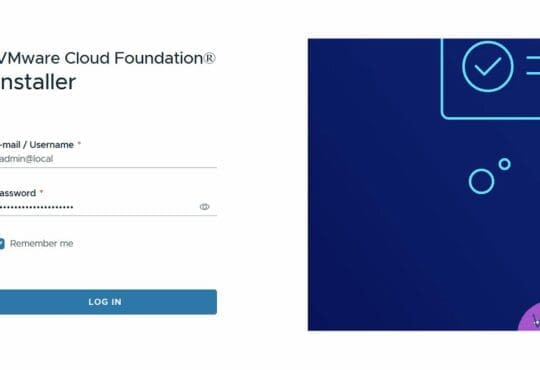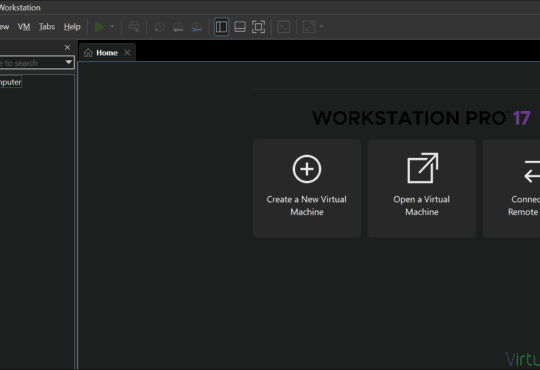Contents
In the fast-paced world of virtualization, staying ahead of security threats is key. Recent discoveries in VMware products have highlighted some serious issues that could put your infrastructure at risk. These vulnerabilities, known as CVE-2025-41236 through CVE-2025-41239, affect popular tools like ESXi, Workstation, and Fusion.
This guide dives deep into each one. We’ll cover what they are, their potential impacts, and step-by-step fixes.
What Are These VMware Security Vulnerabilities?
You might have heard about the latest advisories from Broadcom, VMware’s parent company. These four vulnerabilities emerged from the Pwn2Own Berlin 2025 competition, where researchers demonstrated exploits to earn significant prizes. They target core components in VMware’s ecosystem, allowing potential escapes from guest virtual machines to the host.
To give you a quick overview, here’s a table summarizing each CVE:
CVE ID | Description | CVSS Score | Severity |
|---|---|---|---|
CVE-2025-41236 | Integer overflow in VMXNET3 virtual network adapter leading to out-of-bounds write and code execution. | 9.3 | Critical |
CVE-2025-41237 | Integer underflow in VMCI causing out-of-bounds write and potential code execution. | 9.3 | Critical |
CVE-2025-41238 | Heap overflow in PVSCSI controller resulting in out-of-bounds write and code execution. | 9.3 | Critical |
CVE-2025-41239 | Information disclosure via uninitialized memory in vSockets. | 7.1 | Important |
This table captures the essentials. Now, let’s break them down further.
Understanding CVE-2025-41236: The VMXNET3 Integer Overflow
This flaw sits in the VMXNET3 adapter, a high-performance network interface often used in virtual environments. An attacker with admin rights inside a guest VM can trigger an integer overflow. That leads to an out-of-bounds write, potentially executing arbitrary code on the host.
Exploitation requires the VM to use VMXNET3. Other adapters, like E1000, remain safe. Researchers from STARLabs SG showcased this at Pwn2Own, earning $150,000. It’s a reminder of how network components can become weak points.
Diving into CVE-2025-41237: VMCI Integer Underflow Issue
VMCI handles communication between host and guest, enabling features like shared folders. Here, an integer underflow opens the door to out-of-bounds writes. A privileged user in the guest could exploit this to run code in the VMX process on the host.
On ESXi, the sandbox limits damage. But on desktop products like Workstation, it could mean full host compromise. Corentin BAYET from REverse Tactics demonstrated this, combining it with another flaw for a $112,500 prize.
Exploring CVE-2025-41238: PVSCSI Heap Overflow Vulnerability
The PVSCSI controller manages virtual disks efficiently. This vulnerability involves a heap overflow during command processing, again leading to out-of-bounds writes and code execution.
Notably, on ESXi, it only works in unsupported setups. For Workstation and Fusion, the risk is higher. Synacktiv’s team exploited it at Pwn2Own, securing $80,000. This highlights the importance of configuration checks.
Examining CVE-2025-41239: vSockets Information Disclosure Flaw
Unlike the others, this one focuses on data leakage rather than execution. vSockets, used for inter-process communication, exposes uninitialized memory. An attacker could read sensitive info from processes using vSockets.
It affects Windows versions of VMware Tools mainly. While less severe, it could aid in chaining attacks. Multiple researchers, including from REverse Tactics and THEORI, reported it.

How Do These Vulnerabilities Impact VMware Technologies?
These issues don’t just stay theoretical. They were proven at a major hacking event, showing real-world feasibility. If exploited, they could lead to data breaches or system takeovers. But the effects vary by product.
Consider your setup. In a large data center, one compromised host might cascade risks. On a personal workstation, it could expose your entire machine. Let’s look closer.
Impact on ESXi Hypervisor
ESXi powers many enterprise environments. For the critical flaws, exploitation stays within the VMX sandbox, reducing widespread damage. However, CVE-2025-41238 needs non-standard configs to work.
Still, info disclosure from CVE-2025-41239 could leak kernel data. In cloud setups like VMware Cloud Foundation, this might affect multiple tenants. Quick action prevents lateral movement.
Effects on Workstation and Fusion
These desktop tools face higher risks. Without ESXi’s sandbox, code execution can hit the host directly. Imagine running a test VM that turns against your main system.
Fusion on macOS and Workstation on Windows or Linux are vulnerable. If you use them for development, prioritize updates to avoid personal data loss.
Risks to VMware Tools and Cloud Foundation
VMware Tools enhances guest performance. The info disclosure in CVE-2025-41239 targets Windows guests, potentially exposing credentials.
For Cloud Foundation, which bundles ESXi and other components, all flaws apply. Telco products share similar risks. Overall, unpatched systems invite targeted attacks.

How to Fix These Vulnerabilities Step by Step
The good news is fixes are available. Broadcom released patches shortly after the disclosures. No workarounds exist, so updating is essential. Start by assessing your versions.
Here’s another table with affected and fixed versions for key products:
Product | Vulnerable Versions | Fixed Versions |
|---|---|---|
VMware ESXi | 8.0 before U3f, 7.0 before U3w | ESXi80U3f-24784735, ESXi70U3w-24784741 |
VMware Workstation Pro | 17.x before 17.6.4 | 17.6.4 |
VMware Fusion | 13.x before 13.6.4 | 13.6.4 |
VMware Tools (Windows) | 13.x, 12.x, 11.x | 13.0.1.0, 12.5.3 |
VMware Cloud Foundation | 5.x, 4.5.x | Apply async patches to ESXi fixed builds |
This table helps plan your upgrades. Now, follow these steps.
Updating ESXi to Secure Versions
Begin with a backup of your configuration. Use vSphere Update Manager for clustered environments.
To patch manually:
- Download the patch bundle from Broadcom’s portal.
- Put ESXi in maintenance mode.
- Run esxcli software profile update with the depot zip.
- Reboot and verify.
Test in a lab first. This process typically takes under an hour per host.
Patching Workstation and Fusion
For desktop apps, it’s simpler. Download the latest installer from the Broadcom support site.
Run the updater, which handles the process automatically. Restart your system afterward. Ensure all VMs are powered off before starting.
If you have multiple installs, script the updates for efficiency.
Upgrading VMware Tools
Tools updates are guest-side. For Windows, use the ISO from the host or download separately.
In the guest OS, run the setup executable. Reboot if prompted. For bulk updates, use automation tools like PowerCLI.
Linux and macOS Tools are unaffected by CVE-2025-41239, but update for consistency.
Handling Cloud Foundation and Other Products
Cloud Foundation requires async patching. Follow Broadcom’s guide for your version.
For Telco products, apply the same ESXi patches. Monitor logs post-update for issues.
After fixes, scan your environment with tools like vulnerability assessors to confirm.
Frequently Asked Questions
What makes these vulnerabilities so dangerous?
They allow guest-to-host escapes, which could compromise entire infrastructures. Demonstrated at Pwn2Own, they show practical exploit paths.
How can I check if my VMware setup is affected?
Review your product versions against the advisory. Use commands like esxcli system version get on ESXi.
Are there any signs of exploitation in the wild?
Broadcom reports no known wild exploits yet. But with public details, risks rise quickly.
Do I need to update all components at once?
Prioritize based on exposure. Start with hypervisors, then Tools.
Where can I find more official info?
Check the Broadcom advisory for full details. Also, visit the National Vulnerability Database for CVE specifics.
For more on the Pwn2Own exploits, see the Zero Day Initiative site (https://www.zerodayinitiative.com/).
And for in-depth CVE data, refer to NIST’s NVD (https://nvd.nist.gov/).
Stay Informed and Protected
To keep up with future threats and tips, subscribe to the virtualg.uk mailing list at https://virtualg.uk/subscribe





